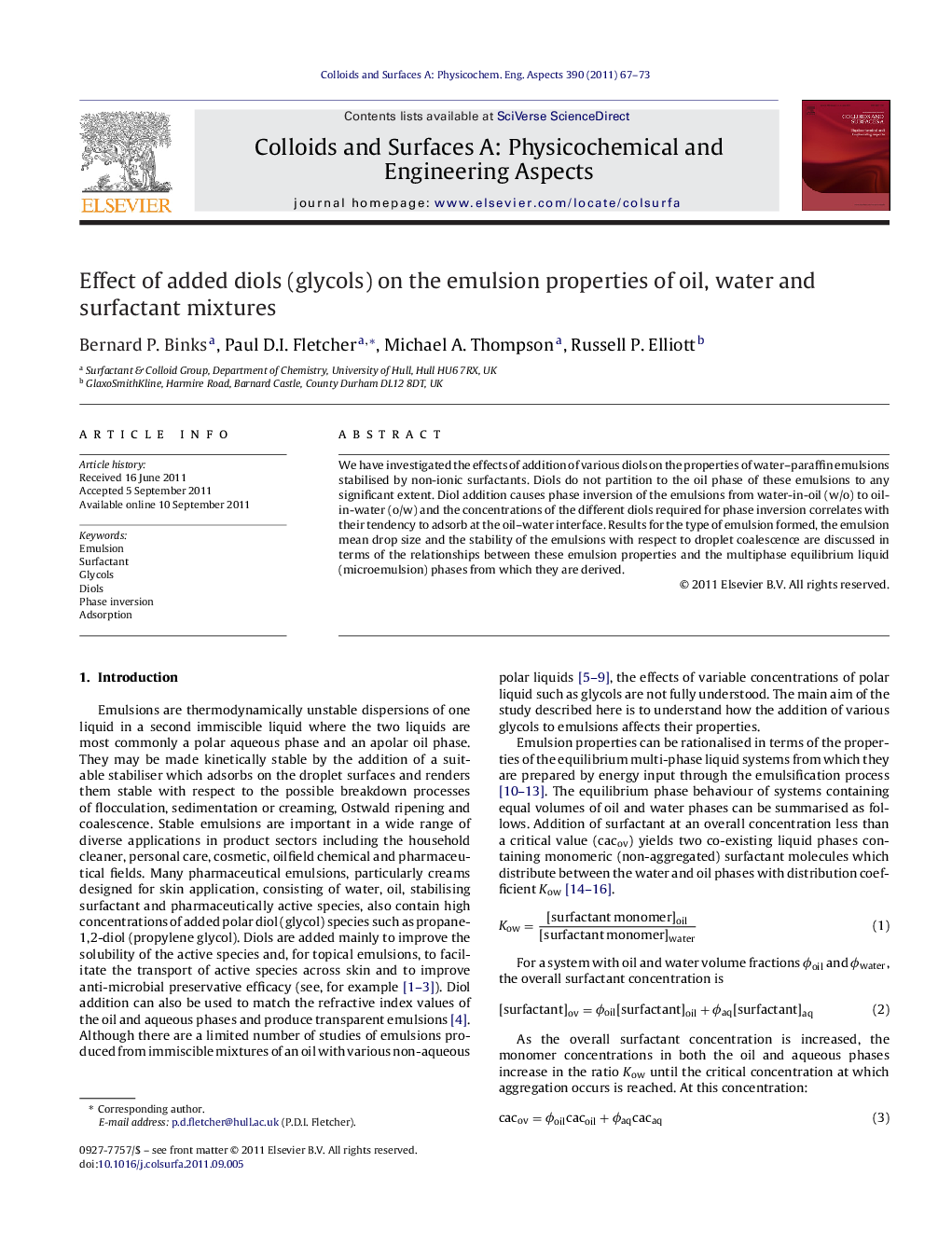| Article ID | Journal | Published Year | Pages | File Type |
|---|---|---|---|---|
| 594467 | Colloids and Surfaces A: Physicochemical and Engineering Aspects | 2011 | 7 Pages |
We have investigated the effects of addition of various diols on the properties of water–paraffin emulsions stabilised by non-ionic surfactants. Diols do not partition to the oil phase of these emulsions to any significant extent. Diol addition causes phase inversion of the emulsions from water-in-oil (w/o) to oil-in-water (o/w) and the concentrations of the different diols required for phase inversion correlates with their tendency to adsorb at the oil–water interface. Results for the type of emulsion formed, the emulsion mean drop size and the stability of the emulsions with respect to droplet coalescence are discussed in terms of the relationships between these emulsion properties and the multiphase equilibrium liquid (microemulsion) phases from which they are derived.
Graphical abstractDiol addition causes phase inversion of the emulsions from water-in-oil (w/o) to oil-in-water (o/w).Figure optionsDownload full-size imageDownload as PowerPoint slideHighlights► Diol addition causes emulsion phase inversion from water-in-oil to oil-in-water. ► Diol concentration at inversion correlates with their interfacial adsorption. ► Emulsion mean drop size is minimum around phase inversion. ► Emulsion stability is minimum around phase inversion. ► Diol addition increases the amount of non-adsorbed surfactant present.
